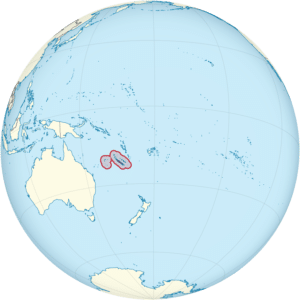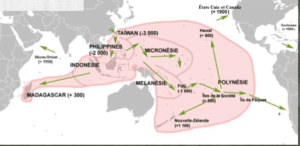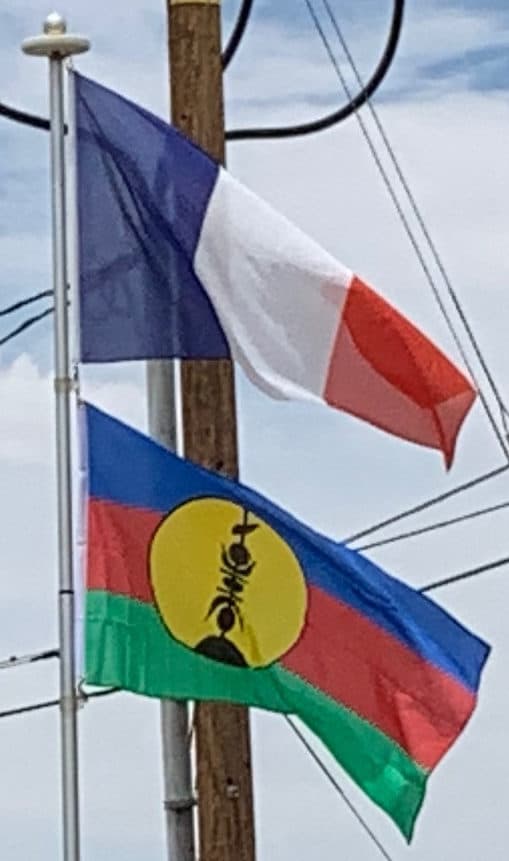Introduction:
New Caledonia is a special collectivity of France, currently governed under the Nouméa Accord, located in the southwest Pacific Ocean, to the south of Vanuatu, about 1,210 km (750 mi) east of Australia and 20,000 km (12,000 mi) from Metropolitan France. The archipelago, part of the Melanesia subregion, includes the main island of Grande Terre, the Loyalty Islands, the Chesterfield Islands, the Belep archipelago, the Isle of Pines, and a few remote islets. The Chesterfield Islands are in the Coral Sea. French people, and especially locals, refer to Grande Terre as Le Caillou (“the pebble”).

New Caledonia has a land area of 18,576 km2 (7,172 sq mi) divided into three provinces. The North and South Provinces are located on the New Caledonian mainland, while the Loyalty Islands Province is a series of islands off the mainland. Its population of 271,407 (October 2019 census) consists of a mix of the original inhabitants, Kanak people, who are the majority in the North Province and the Loyalty Islands Province and people of European descent (Caldoches and Metropolitan French), Polynesian people (mostly Wallisians), and Southeast Asian people, as well as a few people of Pied-Noir and North African descent who are the majority in the South Province. The capital of the territory is Nouméa.
History:
Pre-French Times:
The earliest traces of human presence in New Caledonia date back to the Lapita period c. 1600 BC to c. 500 AD. The Lapita were highly skilled navigators and agriculturists with influence over a large area of the Pacific.

British explorer Captain James Cook was the first European to sight New Caledonia, on 4 September 1774, during his second voyage. He named it “New Caledonia”, as the northeast of the island reminded him of Scotland. The west coast of Grande Terre was approached by the Comte de Lapérouse in 1788, shortly before his disappearance, and the Loyalty Islands were first visited between 1793 and 1796 when Mare, Lifou, Tiga, and Ouvea were mapped by William Raven. The English whaler encountered the island named then Britania, and today known as Maré (Loyalty Is.), in November 1793. From 1796 until 1840, only a few sporadic contacts with the archipelago were recorded. About fifty American whalers (identified by Robert Langdon from their log books) have been recorded in the region (Grande Terre, Loyalty Is., Walpole and Hunter) between 1793 and 1887. Contacts with visiting ships became more frequent after 1840, because of their interest in sandalwood.

As trade in sandalwood declined, it was replaced by a new business enterprise, “blackbirding“, a euphemism for taking Melanesian or Western Pacific Islanders from New Caledonia, the Loyalty Islands, New Hebrides, New Guinea, and the Solomon Islands into indentured or forced labor in the sugar cane plantations in Fiji and Queensland by various methods of trickery and deception. Blackbirding was practiced by both French and British-Australian traders, but in New Caledonia’s case, the trade in the early decades of the twentieth century involved relocating children from the Loyalty Islands to the Grand Terre for labour in plantation agriculture. New Caledonia’s primary experience with blackbirding revolved around a trade from the New Hebrides (now Vanuatu) to the Grand Terre for labour in plantation agriculture, mines, as well as guards over convicts and in some public works. The historian Dorothy Shineberg’s milestone study, The People Trade, discusses this ‘migration’. In the early years of the trade, coercion was used to lure Melanesian islanders onto ships. In later years indenture systems were developed; however, when it came to the French slave trade, which took place between its Melanesian colonies of the New Hebrides and New Caledonia, very few regulations were implemented. This represented a departure from the British experience, since increased regulations were developed to mitigate the abuses of blackbirding and ‘recruitment’ strategies on the coastlines.
